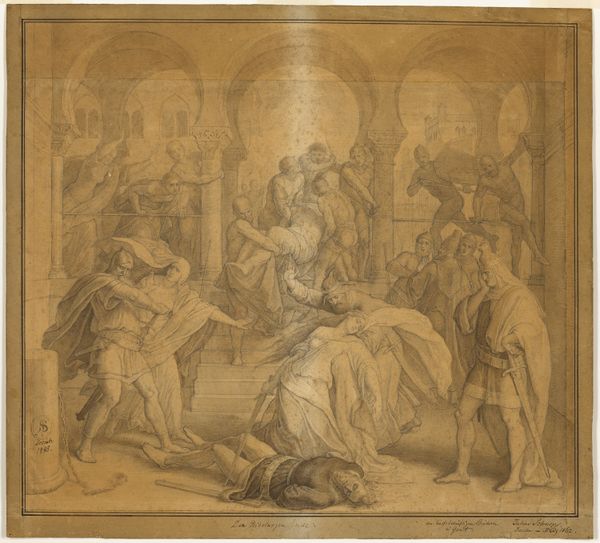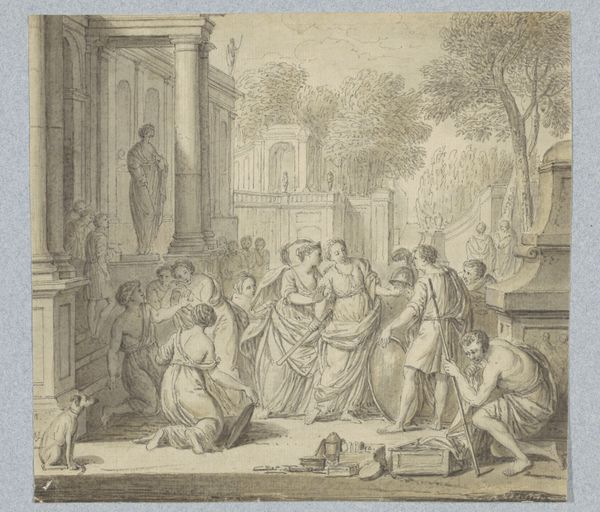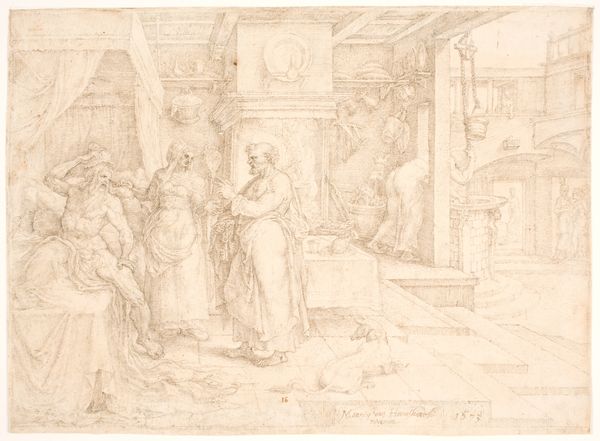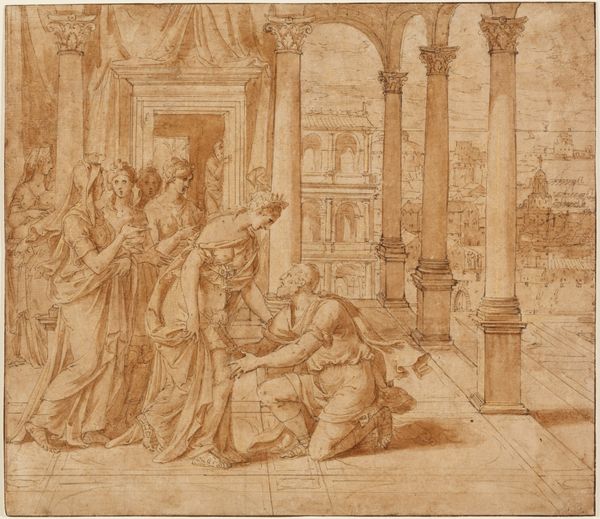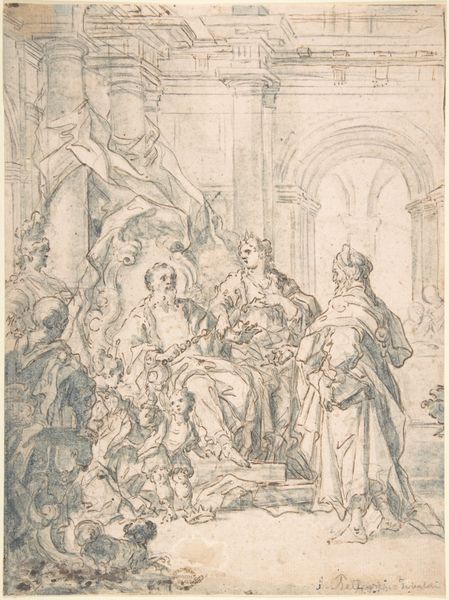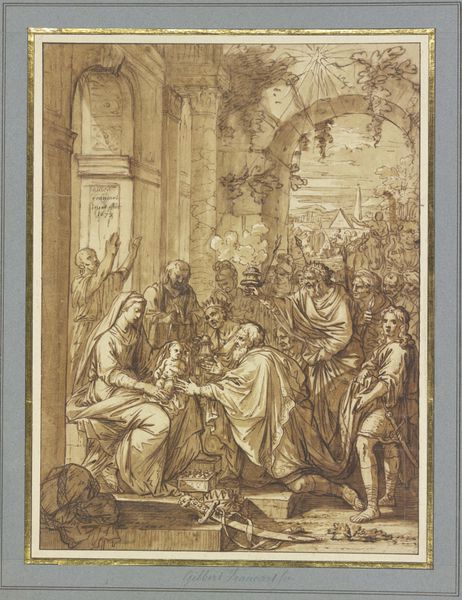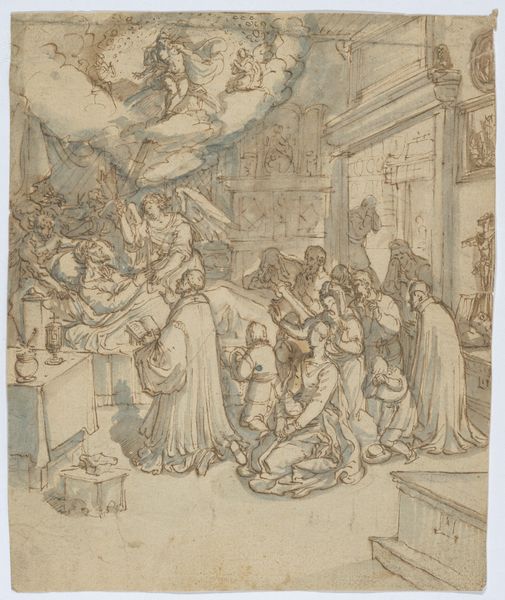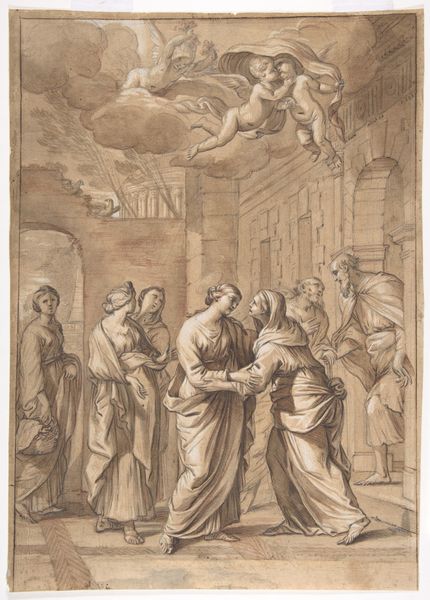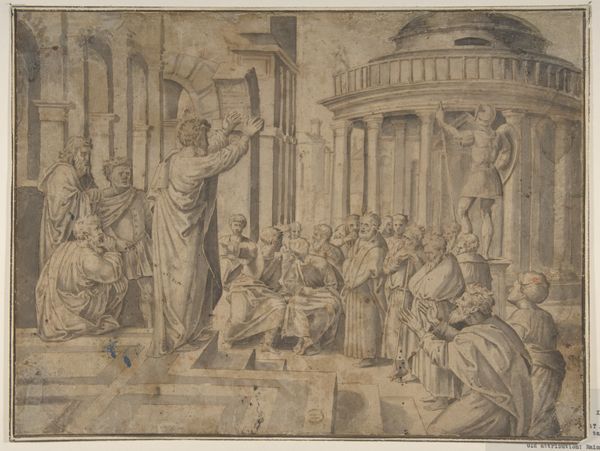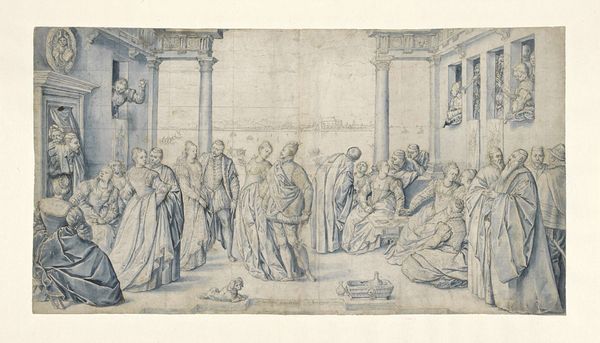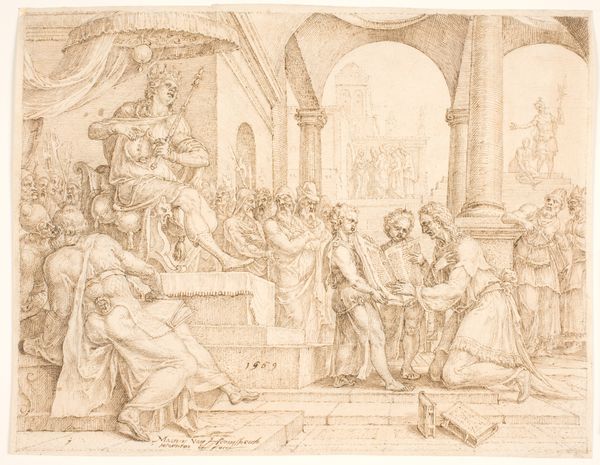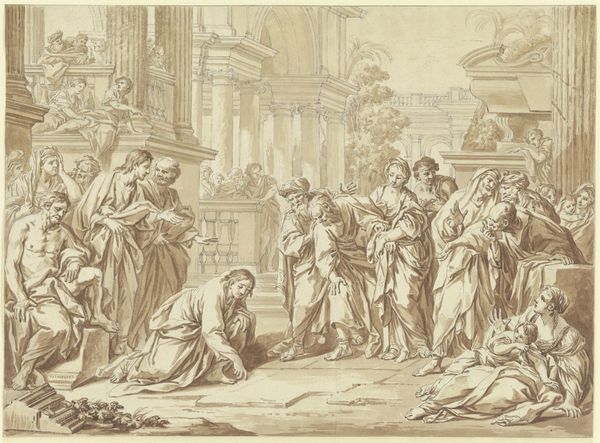
drawing, paper, chalk
#
drawing
#
narrative-art
#
baroque
#
figuration
#
paper
#
chalk
#
15_18th-century
#
history-painting
Copyright: Public Domain
Editor: This chalk drawing from 1715 is called "Presentation at the Temple" by Louis de Boullogne the Younger, and it’s currently housed in the Städel Museum. I'm struck by the delicate lines used to depict this biblical scene. What's your take on it? Curator: I see an artwork deeply embedded in the socio-economic realities of 18th-century France. Boullogne's choice of chalk, a relatively accessible material, speaks to the shifting landscape of art production during that era. The drawing itself, intended as a preparatory sketch perhaps, reveals a glimpse into the artist's labor and the workshop practices of the time. How does the medium inform the work, in your opinion? Editor: Well, the chalk lines seem to offer a sense of immediacy to this historical narrative; they remind us of the artist’s hand. Unlike a finished painting, this feels less about the grand, finished statement and more about the process. Curator: Exactly. And what about the “Temple” itself? Note how the columns, despite their grandeur, are rendered with a utilitarian quality. The social function of the church, the production and dissemination of its narrative through accessible artworks, become more central than any notion of divine mystery. Consider also the availability of religious art in 18th-century France. Editor: So, are you suggesting that the artwork's purpose, because of its method of production and distribution, has more significance than just religious iconography? Curator: Precisely! The very act of depicting this scene with these materials points to the economic structures underpinning artistic creation and religious messaging in early modern Europe. Editor: I hadn’t considered it that way. Thanks! Curator: My pleasure. The power of art often lies in what its materials and methods can reveal about the conditions of its making.
Comments
No comments
Be the first to comment and join the conversation on the ultimate creative platform.
